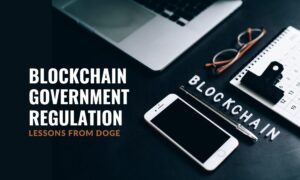Although technology always played a role in students’ education, the COVID-19 pandemic prompted a seismic shift in how students engage with educational content. From online software with auto-graded activities to virtual reality and online test proctoring software, technology transformed the way students learn. Today, these technologies continue to evolve and revolutionize education, offering students unprecedented opportunities to enhance their learning experiences. In this article, we will explore how these technological advancements, further catalyzed by the COVID-19 pandemic, empower students to learn more effectively and efficiently than ever before.
Online Software with Auto-Graded Activities
One of the most significant developments in educational technology is the emergence of online software that provides auto-graded activities for students. These platforms are particularly popular in computer science education, where virtual labs play a crucial role. Virtual lab computer science programs allow students to experiment with coding, algorithms, and software development in a simulated environment. These virtual labs offer a safe and controlled space for students to practice their skills, make mistakes, and learn from their errors. The automated grading system provides instant feedback, helping students identify areas where they need improvement. This real-time assessment not only saves time but also enhances the learning process by enabling students to adapt and refine their skills more effectively.
Virtual Reality in Education
Another remarkable technological advancement that is transforming education is virtual reality (VR). VR technology enables students to immerse themselves in virtual environments, offering a hands-on and interactive learning experience. For instance, students studying history can visit ancient civilizations, while those in biology can explore the inside of a cell. Virtual reality not only makes learning more engaging but also enhances retention. By creating memorable and immersive experiences, students are more likely to retain the information they’ve learned. Educational institutions are increasingly integrating VR into their curricula to provide students with unique opportunities for experiential learning.
Online Polling Software
Engagement and interaction are crucial aspects of effective learning. Online polling software is a valuable tool in this regard. Educators use polling platforms to conduct real-time quizzes, surveys, and discussions, allowing students to actively participate in the learning process.
Online polling encourages students to think critically, express their opinions, and engage in collaborative learning. It also provides instructors with immediate insights into their students’ comprehension and areas of confusion. This feedback loop enables educators to adjust their teaching strategies in real time, ensuring that students receive the support they need.
Online Videos: YouTube and TeacherTube
Platforms like YouTube and TeacherTube revolutionized self-directed learning. These platforms host a vast array of instructional videos on various subjects, making it easier for students to access supplementary materials outside the classroom. Students can watch explanatory videos, tutorials, and lectures from experts in their field of study. These resources offer different perspectives and teaching styles, catering to diverse learning preferences. Additionally, students can pause, rewind, and rewatch videos at their own pace, reinforcing their understanding of challenging topics. While YouTube offers a larger amount of content, TeacherTube provides a safe environment for accessing educational videos.
Online Test Proctoring Software
With the growth of online education and remote learning, ensuring the integrity of assessments has become paramount. Online test proctoring software utilizes webcam and screen-sharing technology to monitor students during exams, preventing cheating and plagiarism. This technology helps maintain the credibility of online education by verifying the identity of students and ensuring that they complete assessments independently. Although some educators and students express privacy concerns, the use of online test proctoring software is a popular tool for preventing plagiarism and cheating in the online learning environment.
E-Books and Online Course Materials
The availability of e-books played a pivotal role in reducing barriers for students with disabilities. After all, digital books include accessibility features such as text-to-speech functionality and adjustable font sizes. These features make learning materials more accessible and inclusive for students with visual impairments or reading disabilities.
Conclusion
Because of e-books, students now have access to a wider range of resources and technologies that enhance their learning journey. These advancements not only make learning more engaging but also provide valuable feedback and opportunities for self-directed study. As technology continues to evolve, so will its impact on education, enabling students to learn more effectively than ever before.



































